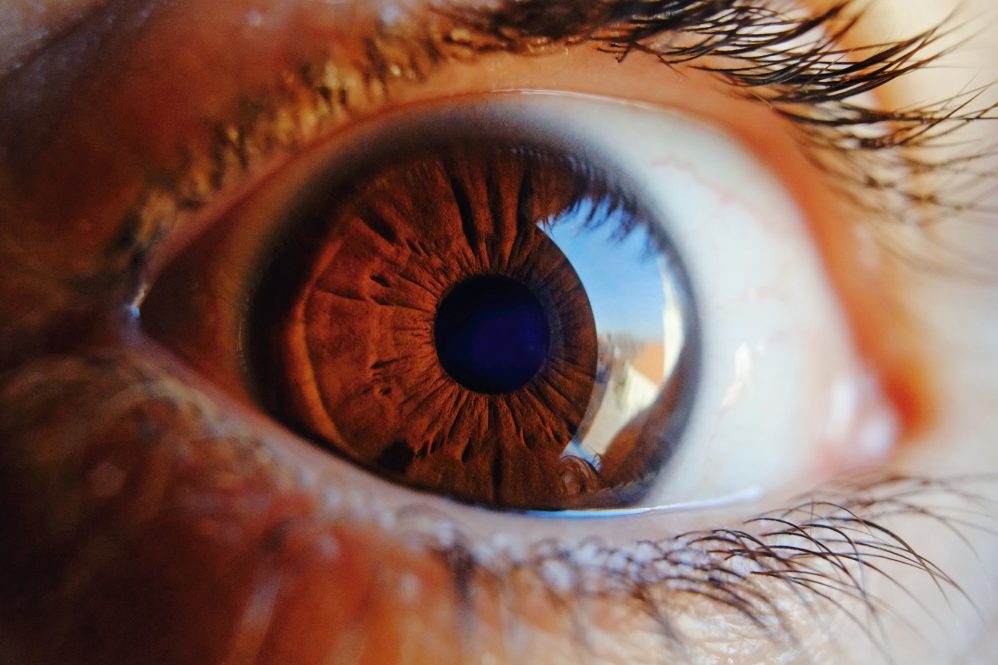Chemical weapons like mustard gas have been used in warfare for over a century. They can cause mass casualties with relative ease, making them a continuing threat to national security.
The two main types of mustard gases – sulfur mustard and nitrogen mustard – cause blistering and severe acute injury to the eyes and lungs.
These injuries can have serious long-term consequences for vision because they often cause fibrotic scarring on the cornea. Fibrotic scarring occurs when scar tissue thickens and forms permanent scar tissue rather than healing normally.
Sulfur mustard also affects the internal retinal tissues, putting the whole eye at risk for permanent damage.
Currently, there are no effective treatments for mustard gas injury. One of the main challenges is that a chemical weapon attack would be a mass casualty event and remedies would need to be deployed at the scale and urgency seen in battlefield-like conditions.
Royce Mohan, professor of neuroscience at UConn Health, has received a $450,000 grant from the National Eye Institute to investigate how another kind of chemical injury could provide answers for developing treatments for mustard gas injuries.
Our ultimate goal is to illuminate novel druggable targets and unravel a treatment paradigm that will help develop future collaborations for drug development and aligned with the CounterACT program. — Royce Mohan
This project is funded through the National Institutes of Health CounterACT (Countermeasures Against Chemical Threats) program. The aim of the program is to integrate innovative research with the latest technological advances in science and medicine to develop rapid, effective response measures for chemical emergencies.
“Our ultimate goal is to illuminate novel druggable targets and unravel a treatment paradigm that will help develop future collaborations for drug development and aligned with the CounterACT program,” Mohan says.
Sodium hydroxide is a highly alkaline (or basic) compound that can cause severe chemical burns, including serious injury if accidently applied to the cornea.
“Similar alkaline substances are also found in many caustic household cleaners,” Mohan says.
Notably, scientist are just beginning to understand the ease by which these chemicals penetrate the eye and cause retinal injury.
By contrast to mustard gas, sodium hydroxide is well-studied. Mohan will apply knowledge about the treatment of sodium hydroxide burns to mustard gas injuries in hopes of identifying a target for treatment.
Mohan and co-investigator Paola Bargagna-Mohan previously discovered that sodium hydroxide causes an increase in reactivity of glial cells in the retina. This sustained increase in glial reactivity contributes to the formation of glial scars that drive retinal degeneration.
Mohan attributes this chronic glial reactivity to increases in hypercitrullination, the process through which the amino acid arginine residues on proteins are converted into another amino acid known as citrulline. These changes alter the structure of proteins and cause their dysfunction. Hence, this type of protein modification is linked to several fibrotic diseases.
His lab discovered that expression of the enzyme known as peptide arginine deiminase (PAD4) drives hypercitrullination in the retina. This means PAD4 could be a promising target for drug treatments as, in earlier studies, Mohan found that inhibiting PAD4 blocked hypercitrullination.
In this new project, Mohan will examine this pathway in nitrogen mustard injury hoping to find similar results as in the sodium hydroxide injury models.
He hypothesizes that hypercitrullination is an important process in nitrogen mustard injury and that PAD4 is the principal agent driving that process.
Mohan will also test drug formulations containing a small molecule inhibitor against PAD4 for delivery to the eye. He will also look at the impact of turning off the gene that contains the genetic instructions to produce PAD4.
This work will pave the way for developing treatments for mustard gas injury that can be deployed quickly and effectively in the event of a mass chemical weapon attack.
Mohan holds a Ph.D. in biochemistry from The Ohio State University and completed his postdoctoral training in chemical biology at Yale University. His research focuses on finding ways to heal the human eye after it suffers injury or disease. Specifically, he studies Muller glia in retinal conditions such as age-related macular degeneration; myofibroblasts and Schwann cells in corneal nerve regeneration, ocular pain, and fibrosis; and has developed novel in vivo imaging probes for type III intermediate filament protein biomarkers.



